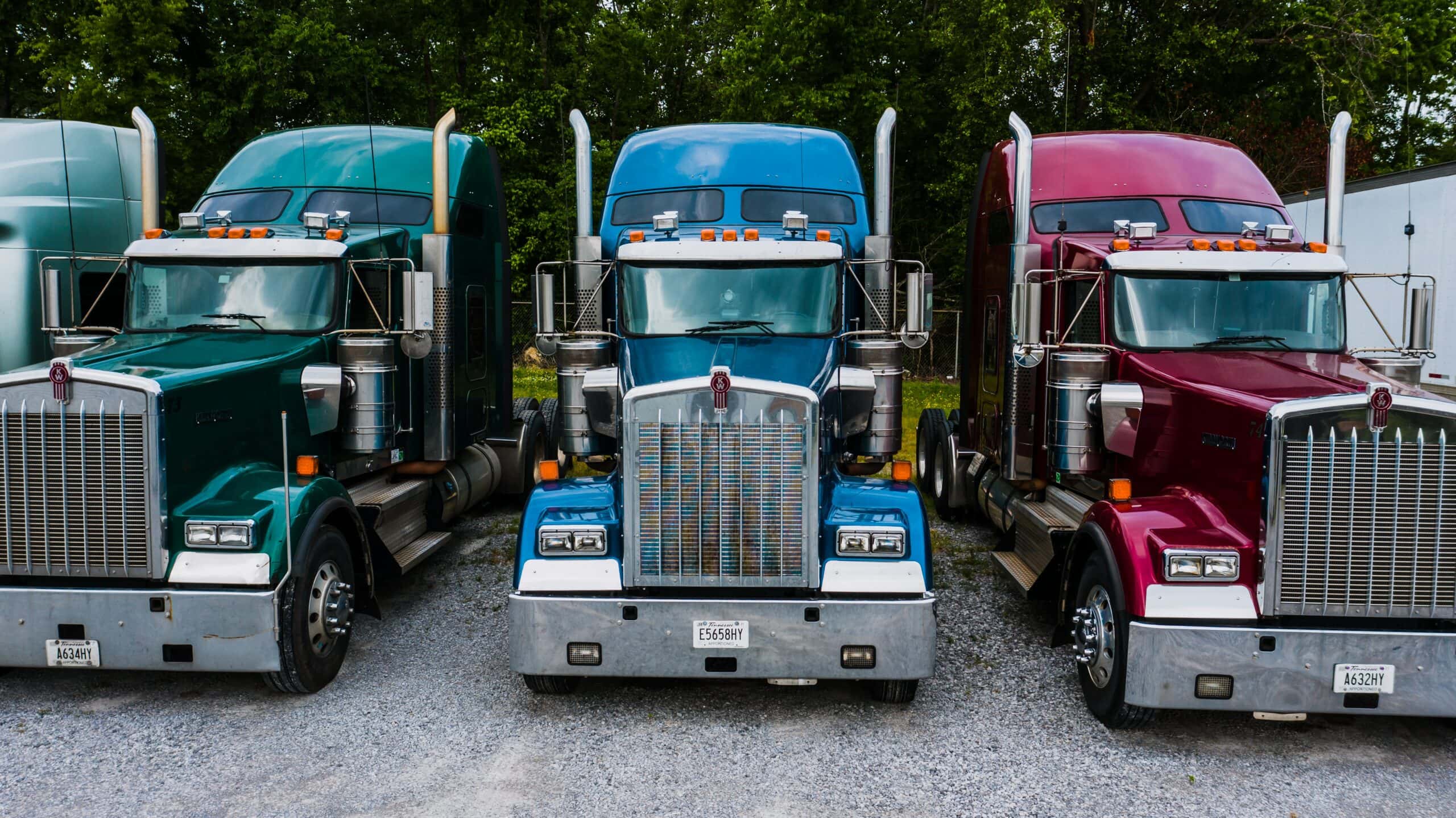
After buying a semi-truck, ensure vehicle registration and insurance are updated. Familiarize yourself with truck maintenance schedules and perform necessary inspections.
Then you can start your business confidently. Congratulations on the new addition to your commercial fleet! Purchasing a semi-truck is a significant investment that can bolster your business operations and boost your revenue. However, your responsibilities don’t end at the point of sale.
Once you’ve acquired the vehicle, there are several crucial steps you need to take to ensure the smooth operation of your new asset. From registration and insurance to maintenance and setting up your business operations, this guide will walk you through everything you need to do after buying a semi-truck. By following these steps, you’ll be well-prepared to hit the road and maximize the potential of your new truck.
Navigate As You Want: [show]
1. Inspecting Your Semi-truck
Inspecting your semi-truck is an essential step after purchasing it. By carefully examining the vehicle’s condition, you can ensure its safety and identify any potential issues that may require attention.
1.1 Exterior Inspection
After purchasing a semi-truck, it’s crucial to conduct a thorough inspection of its exterior to identify any potential issues or damage. Check for scratches, dents, and rust on the body, as well as the condition of the tires and windshield. Ensure that all lights, including the headlights, brake lights, and turn signals, are functioning properly. Take note of any leaks or fluid stains underneath the vehicle as this could indicate a mechanical problem. It’s important to address any defects or damages immediately to prevent further issues and ensure the safety of your truck on the road.
1.2 Interior Inspection
In addition to the exterior inspection, it’s crucial to inspect the interior of your semi-truck. Check the dashboard for any warning lights or malfunctions. Inspect the seats, steering wheel, and mirrors for any signs of wear and tear. Test the brakes and acceleration to ensure their proper functioning. Make sure all instruments such as gauges and controls are in good working condition. Pay attention to the wipers, heating, and air conditioning systems as well. Any issues found during the interior inspection should be addressed promptly to maintain a safe and comfortable driving experience.
1.3 Mechanical Inspection
To ensure the reliability and performance of your semi-truck, a thorough mechanical inspection is essential. Check the engine for any signs of leaks, odd noises, or excessive smoke. Inspect the brake system, suspension, and steering components to ensure they are in proper working order. Address any fluid leaks, warning lights, or unusual vibrations immediately. Regular maintenance, such as oil changes and filter replacements, should be adhered to according to the manufacturer’s recommendations. Prioritize the safety and maintenance of your semi-truck’s mechanical aspects to avoid breakdowns and expensive repairs in the long run.

Credit: bookertrans.com
2. Registering And Licensing
After buying a semi-truck, it’s crucial to obtain proper documents, contact the local DMV, and pay the required fees for registering and licensing. Ensure you have all necessary paperwork such as the bill of sale, vehicle identification number (VIN), and proof of insurance. Contact the local DMV to understand the specific requirements for registering a semi-truck in your area. Be prepared to pay the required fees for obtaining the necessary permits and licenses. Keep in mind that the process may vary by state, so it’s important to stay informed and compliant with local regulations.
3. Securing Insurance Coverage
After purchasing a semi-truck, it’s essential to secure insurance coverage. Start by researching different insurance providers to compare their offerings and getting quotes. Consider factors such as coverage options, premiums, and deductibles when choosing the right coverage for your semi-truck. It’s important to have comprehensive insurance to protect your investment and mitigate financial risks in case of accidents or unforeseen events.

Credit: m.youtube.com
4. Setting Up Maintenance Schedule
After purchasing a semi-truck, it is essential to set up a maintenance schedule to ensure its optimal performance and longevity. This involves finding a reliable mechanic who specializes in servicing semi-trucks. It is recommended to ask for referrals from other truck owners or check online reviews to determine their expertise and trustworthiness.
Creating a maintenance checklist is crucial to stay organized and ensure that all necessary tasks are completed. This checklist should include regular oil changes, tire inspections, brake checks, and other routine maintenance procedures. By following this checklist, you can avoid overlooking any important maintenance tasks.
Scheduling regular inspections is another critical step in maintaining your semi-truck’s condition. These inspections should be scheduled at specific intervals to identify any potential issues before they become major problems. A qualified mechanic will be able to thoroughly inspect your truck’s engine, electrical systems, brakes, and other components to ensure their proper functioning.
5. Planning For Financing And Budgeting
After purchasing a semi-truck, it’s crucial to consider your financing options and create a solid financial plan to manage your expenses effectively. Exploring different financing options can help you secure a loan or lease that suits your budget and needs. Conduct thorough research and compare interest rates, terms, and conditions from various financial institutions.
Developing a comprehensive financial plan is essential to stay organized and ensure your trucking business’s success. Start by setting financial goals and determining your monthly income and expenses. Make sure to include truck loan payments, insurance costs, fuel expenses, and maintenance fees. Tracking income sources and projected revenue can help you stay on top of your finances and make informed decisions.
Monitoring and tracking your expenses is crucial to maintain a healthy financial position. Keep a detailed record of all your expenses, such as fuel costs, repairs, parking fees, permits, and tolls. Review your expenses regularly to identify areas where you can cut costs or optimize spending. By closely monitoring your financials, you can adjust your budget and make necessary adjustments to ensure profitability and long-term success.

Credit: schneiderowneroperators.com
Frequently Asked Questions For What To Do After Buying A Semi-truck
What Steps Should I Take After Purchasing A Semi-truck?
After buying a semi-truck, make sure to obtain proper insurance coverage, register the vehicle with the DMV, and obtain necessary permits and licenses. Additionally, perform a thorough inspection of the truck, arrange for maintenance and repairs if needed, and familiarize yourself with the truck’s maintenance schedule and requirements.
How Can I Find Reliable Maintenance And Repair Services For My Semi-truck?
To find reliable maintenance and repair services for your semi-truck, ask for recommendations from other truckers or trucking companies. Research online reviews and ratings for repair shops in your area. Ensure that the shop is experienced in handling semi-trucks and offers services specifically tailored to your truck’s make and model.
What Are Some Important Factors To Consider When Choosing A Semi-truck Insurance Policy?
When selecting a semi-truck insurance policy, consider factors such as coverage limits, deductibles, premium rates, and the reputation of the insurance company. Make sure the policy covers your specific needs, including liability coverage, physical damage coverage, and cargo coverage if applicable.
It’s also recommended to compare quotes from different insurers to secure the best coverage at a competitive price.
Conclusion
After purchasing a semi-truck, it’s crucial to follow a strategic plan to maximize its potential. Implement a thorough maintenance routine, establish solid business relationships, and invest in comprehensive insurance coverage. By staying updated with industry regulations and embracing technological advancements, you can ensure the success and longevity of your investment.
Remember, taking proactive steps post-purchase will pave the way for a prosperous trucking career.




